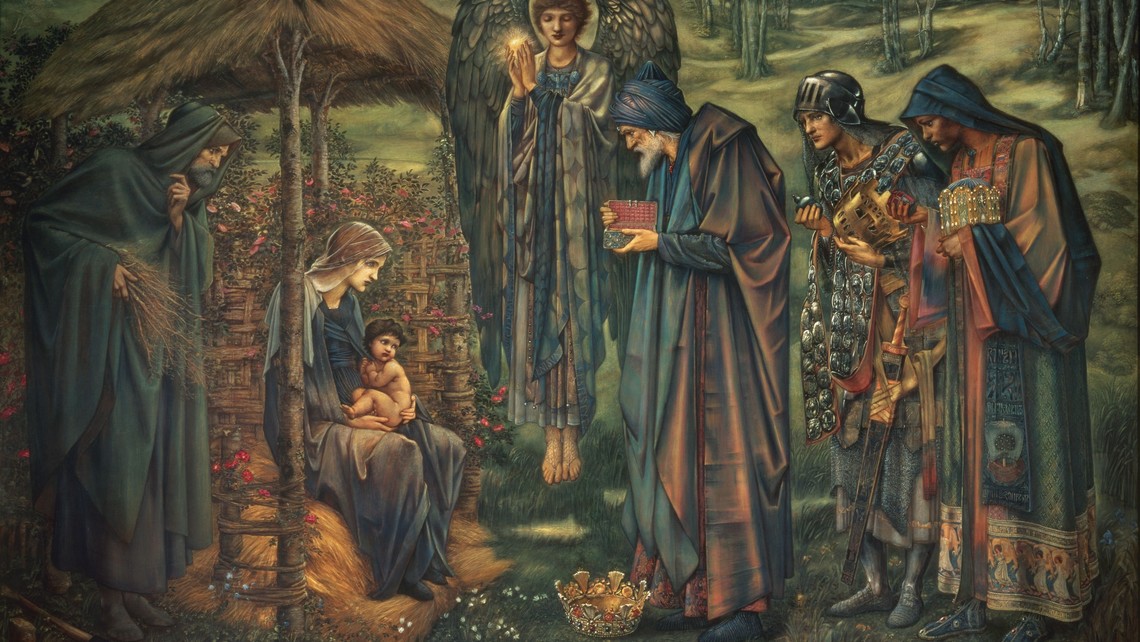
. . .Continued from last week
How often have you heard that Jesus was most certainly not born on December 25? The reasoning goes that the
Catholic Church, already infected by paganism (so critics assert), could better corral and control the Roman
population by “baptizing” the Pagan Roman festival of Saturnalia and turning it into a Catholic holiday.
There are major problems with this view. First, timing: Saturnalia lasts from December 17 to 23. Christmas is
celebrated December 25 and continues until its octave (8th day) on January 1. Second: There is no similarity
between Jesus and Saturn, who is a terror of a god, the deity of magic and sorcery! Saturn loves nothing more
than to bring chaos into the world so that another deity might draw order from Saturn’s chaos, a coordinated
act of divine trickery and manipulation!
As for the Saturnalia itself, it was a series of seven completely lawless and dangerous days and nights in which
a fool, selected by lot to be the Jester King of the duration of the festival, could decree anything he wanted to
the populace, as long as it was outrageous, immoral, and vengeful. Romans were meant to be drunk for the
entire festival. At the end of the Saturnalia, the Jester King is sacrificed to Saturn and order is restored. One
could suppose a sick sort of correlation between Saturnalia and Holy Week, but not Christmas.
The real reason the Church chose December 25 for Christmas is much simpler and far more sensible. When
Luke writes, “In the sixth month, God sent the angel Gabriel to Nazareth, a town in Galilee, to a Virgin pledged
to be married to a man named Joseph, a descendant of David. The Virgin’s name was Mary. The angel went to
her and said, “Greetings, You who art full of grace! The Lord is with you” (Luke 1:26-28). Now which sixth
month is being referred to? It does not say “in the sixth month of Elizabeth’s pregnancy,” but simply “In the
sixth month.” Only later does Luke say that Elizabeth “is in her sixth month” of pregnancy (Luke 1:36).
This means that John the Baptist was conceived six months prior, at the start of the Jewish Year. He most
likely would have been conceived just after Zechariah had served in the Temple in the Holy of Holies for Rosh
Ha-Shannah, and also Yom Kippur (Day of Atonement, which is 10 in the month of Tishri), thus between 11
Tishri and the end of that month.
From Rosh Ha-Shannah, counting to the sixth month (first month Tishri, second Cheshvan, third Kislev, fourth
Tevet, fifth Shevat), we come to the sixth month of the Hebrew year named Adar (corresponding to February or
March). This is the month Gabriel came to Mary and greeted her, and it was then that Jesus was conceived in
Mary’s womb. Counting nine months from A dar (one month gets us to Nisan, two brings us to Iyar, three to
Sivan, four Tamuz, five Av, six Elul, seven Tishri, eight Cheshvan) and at nine months we arrive at the month of
Kislev, which corresponds to our November or December, depending upon how the Hebrew Calendar was
structured that year. *
To our happy surprise, what we discover is that if we take the most common year attributed to Jesus’ birth,
which is 5 B.C. (or 3757 according to the Hebrew numbering allegedly from the Creation of the World), we
discover that on that year Kislev 25 which is the first night of Hanukkah, which celebrates the rededication of
the Temple, was also December 25.
Hanukkah always falls on Kislev 25 which varied with the Roman calendar, but in 5 BC that day coincided
with December 25. But it makes sense of course that Jesus, the light of the world, the one who would rededi-
cate the Temple by his life, would arrive on the holiday which celebrates rededication and renewal.
Which, if the Kislev 25, 5 B.C. date is correct, and if we hold with tradition that Jesus preached until he was 33
½, then according to calculation, Our Lord’s Crucifixion would have taken place Friday, 14 Nisan 3790, which
was April 5, 30 A.D.

————————————————————————————————————————————————————————————————————————————
* We can’t do a simple conversion from the Western calendar to the Hebrew because the former is purely solar, and the latter is a
lunar calendar with secondary solar adjustments to keep the months in line with the seasons. Every month starts on a new moon and
has either 29 or 30 days (a lunar cycle is about 29 1/2 days). Twelve of these alternating 29-30 day months gives a year of 354 days,
which is about 11 ¼ days short of a solar year. To make up this difference, an entire leap month which they call uninventively Adar
II, is added making some years 13 months long. Leap years occur in a fixed pattern of 19 years called the metonic cycle. 3rd, 6th,





